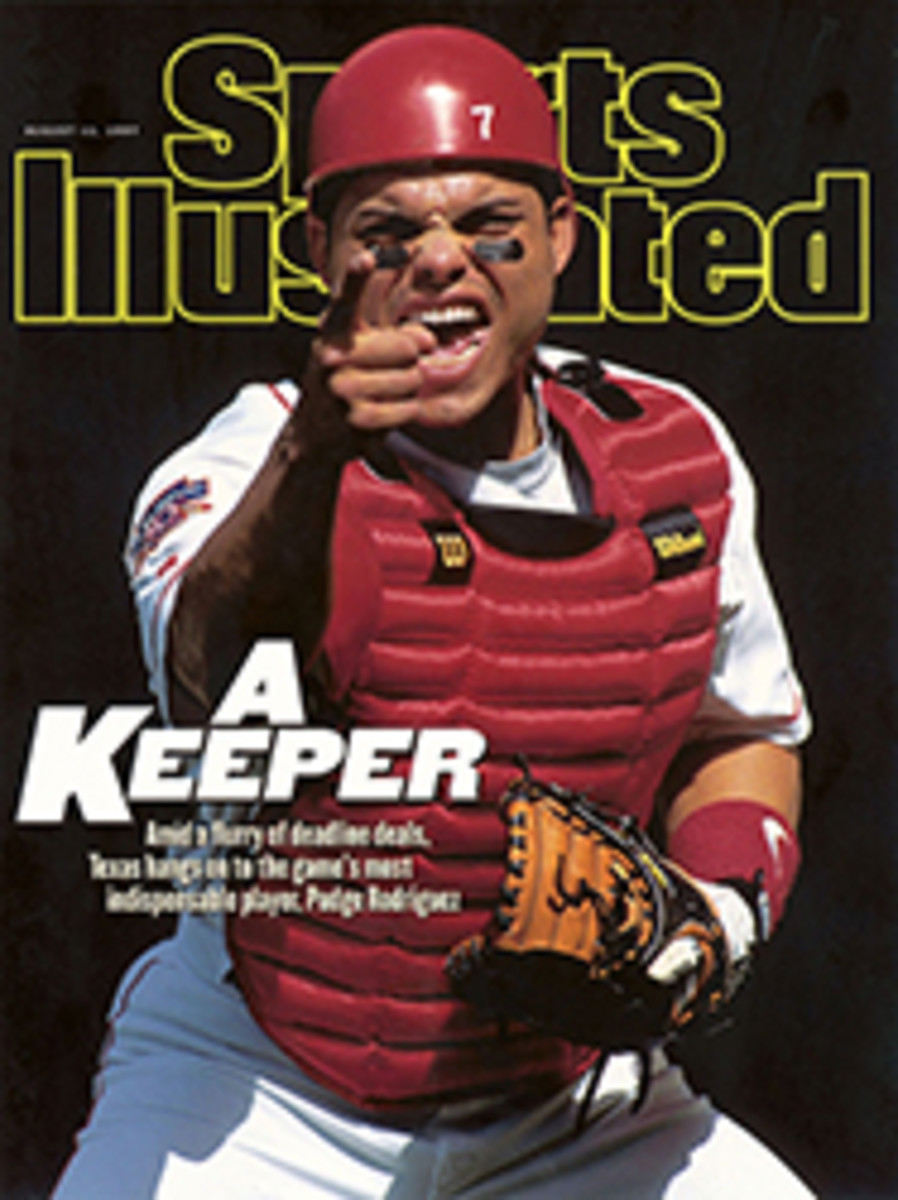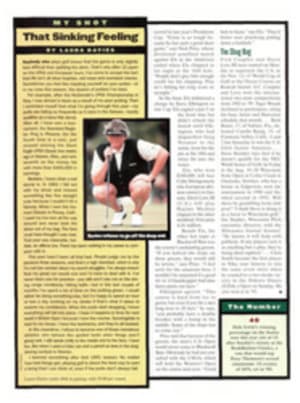
FOUR MINUTES OF FAME FEW REMEMBER DON BOWDEN'S U.S. MILESTONE
When Roger Bannister first ran the mile in less than four
minutes, on May 6, 1954, he was hailed the next morning by The
New York Times as having achieved "one of man's hitherto
unattainable goals." The four-minute barrier was not only
physical but also psychological, and by cracking it with a time
of 3:59.4, the Oxford medical student cleared the path for
runners everywhere. Within three years, sub-four-minute miles
had been run 17 times by 11 runners. But not by an American.
It wasn't until June 1957 that a gangly 20-year-old Californian
with economics studies on his mind, the half mile on his track
agenda and only four competitive miles under his belt became the
first U.S. citizen to run a sub-four-minute mile. But who
remembers? Though he bolstered his nation's pride 40 years ago,
Don Bowden remains little more than an afterthought in most
running histories. Unlike Bannister, Bowden didn't become a
household name.
Of course, if Bowden had had his way he would have been a
football player, not a runner. But he was 6'3", weighed about
160 pounds and was nicknamed Stork. Lee Cox, the football and
track coach at Lincoln High in San Jose, took one look at him
and said, "Don, I don't want to have to scrape you off the
field. I think I'd better make a track man out of you."
Bowden developed into a premier runner, setting a national high
school record of 1:52.3 in the half mile at about the same time
Bannister was running his famous mile. Then it was off to study
economics at the University of California, where he trained
under track coach Brutus Hamilton and continued to dominate the
half mile, setting an NCAA record of 1:47.2 in 1957. He never
ran the mile competitively in high school and did so only
occasionally at Cal. "I had the speed to run the half mile,"
says Bowden, now 61 and the owner of a tennis-court-surfacing
export business in San Jose. "The mile took a lot more training,
more endurance."
Hamilton, though, thought he would fare well at the longer
distance. He ran his first collegiate mile in 1955, and he set a
national freshman record of 4:11.7. When he ran a 4:08.2 in the
mile as a sophomore, one local newspaper headline asked, CAN
BOWDEN RUN 4-MINUTE MILE? Coach Hamilton said he was "horrified
by the very audacity of the question."
Nevertheless, in the summer of 1956 Bowden qualified for the
U.S. Olympic team not in the 800 meters but in the 1,500.
Because the Games were in Melbourne, they were scheduled for
late November, during the Australian spring. That meant Bowden
would miss the fall semester at Cal if he competed. Intent on
graduating on time, he opted for a double session of summer
school at Berkeley. Unfortunately the combination of intense
training and extra classes led to a case of mononucleosis.
Though he recovered enough to go to Melbourne, he didn't make it
past the first heat in the 1,500.
Americans were still trying to break the four-minute barrier
when the next outdoor track season started. Some had come
agonizingly close--Wes Santee of Kansas had been .5 of a second
too slow in 1955. But when Bowden ran an unofficial 4:01.6 in
the mile anchor lap of a medley relay in late spring of 1957,
even his cautious coach started to wonder if Bowden was the man
to do it.
The Pacific Association Amateur Athletic Union meet, on June 1,
was the last chance Bowden would have to run the mile during the
1957 track season, and he and Hamilton decided to go for it. But
while previous sub-four milers had benefited from pacesetters,
months of focused training and fierce competition, Bowden had
none of those. And he had other problems, too.
For starters, Bowden had an economics final at 1 p.m. on June 1,
seven hours before his race was to be held some 75 miles away,
in Stockton. Meanwhile, Cal was hosting the state high school
championship, just a javelin throw from Bowden's classroom. "I
wasn't worried about the race," he recalls, "but every time they
shot that gun off, I'd think about it again."
When the exam ended, Bowden rushed to Stockton, arriving about
an hour before the starting gun. The field itself was hardly
world class. There was no one among the other five milers to
push Bowden, and his pacesetter, a Cal teammate, had taken ill.
On top of it all, Bowden felt lousy. "I don't feel much like
running," he told a reporter before the race. "I haven't been
sleeping."
So here was a young man who had run the mile fewer than half a
dozen times in competition and had never officially come within
eight seconds of four minutes. He was mentally exhausted and
physically untested, and he had no competition but the clock.
Yet Hamilton still had a feeling about that evening. He told
Bowden to start out running a four-minute pace and see how long
he could maintain it.
At the quarter mile Bowden's time was 59.7 seconds, and he led
by eight yards. At the half mile it was 2:00.8, with a 20-yard
lead. After three quarters he was 40 yards ahead with a time of
3:00.6. "Brutus shouted, 'You're on schedule! Go for it!'"
Bowden recalls. "So I started going as fast as I could."
The race announcer started counting off the time as Bowden
sprinted down the backstretch: 3:50...3:51... 3:52. As the hum
of the crowd rose to a roar, Bowden ran the final quarter mile
in 58.1 seconds and crossed the finish line 60 yards ahead of
the second-place runner, Jack Wilcox of Fresno State. Bowden's
time, celebrated in headlines across the country, was 3:58.7.
That made him the third-fastest miler ever, behind Jim Bailey
and world-record holder John Landy, both of Australia; the
youngest to break four minutes; and, most important, the first
American to do so. The San Francisco Examiner declared that
Americans "can look foreigners straight in the eye and say,
'We've got one, too.'" Arthur Daley of The New York Times wrote
that Bowden's feat "ended a period of vast embarrassment for the
United States." Still another report compared Bowden to the U.S.
missile Explorer, America's answer to the U.S.S.R.'s Sputnik.
Bowden's four minutes of fame extended to 15. He was flown to
New York City, where he appeared on Today, visited the United
Nations and received a trophy from the AAU. The silver cup had
been donated in 1941 by a Swedish-American businessman, Hans
Lagerloef, to be awarded to the first American to run a
sub-four-minute mile. It had been locked in a vault and nearly
forgotten until Bowden's feat 16 years later.
In the days following the race, Bowden voiced two goals. He
wanted to break Landy's world record for the mile (3:58.0) and
to redeem himself in the next Olympic Games. The Chicago Daily
News pronounced him "a cinch to do both." But he would
accomplish neither. Never again would Bowden break four minutes
in the mile, and just weeks before the 1960 Olympic trials he
would tear his Achilles tendon.
His biggest subsequent headlines came in noncompetitive
sprints--when he ran for help after finding a woman trapped
under her car in the Berkeley hills in 1958, and two years
later, when he chased down a 14-year-old delinquent escaping
from juvenile hall. Each run was estimated at about a half mile,
Bowden's best distance.
Indeed, while more than 150 people have been selected to the
National Track and Field Hall of Fame, including his coach,
Hamilton, and miler Jim Beatty, the first person to run an
indoor mile in less than four minutes, Bowden isn't one of them.
As for cracking four minutes in the mile, it is no longer the
miracle it was once considered--the world record is 3:44.39--and
more than 200 Americans have accomplished the feat since 1957.
But Bowden finds solace in historical context. "When you're the
last guy to break a record, it can be broken again," he says.
"But they can't take it away from you when you're the first."
Freelancer Brad Herzog, who lives in Pacific Palisades, Calif.,
is a frequent contributor.
B/W PHOTO: AP PHOTO/EKB Bowden (above) broke the tape in 3:58.7, winning a modest place in history and the trophy that went to the first sub-four U.S. runner. [Don Bowden crossing finish line in race]
COLOR PHOTO: JASON M. GROW/SABA [Don Bowden with trophy and newspaper clippings]

